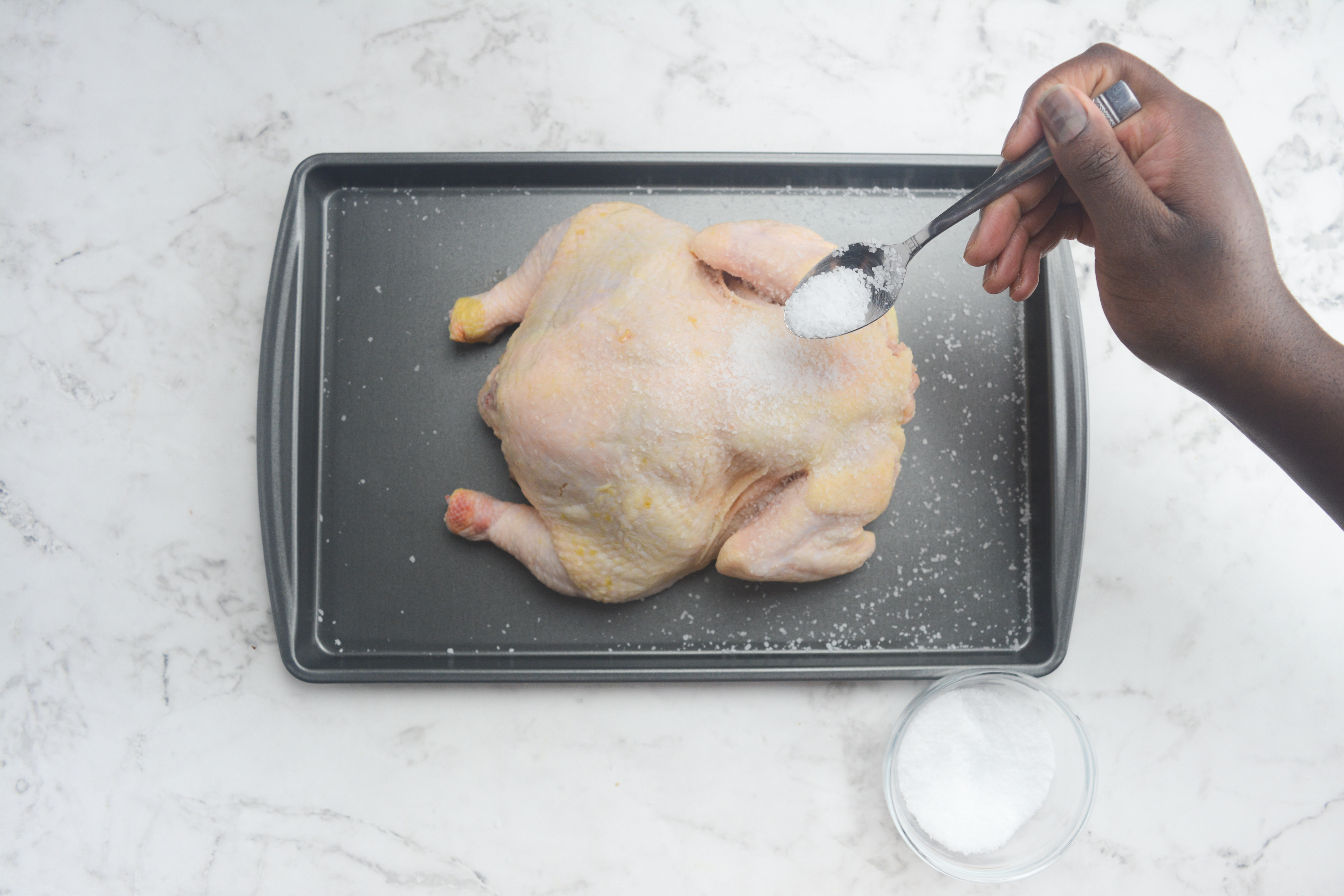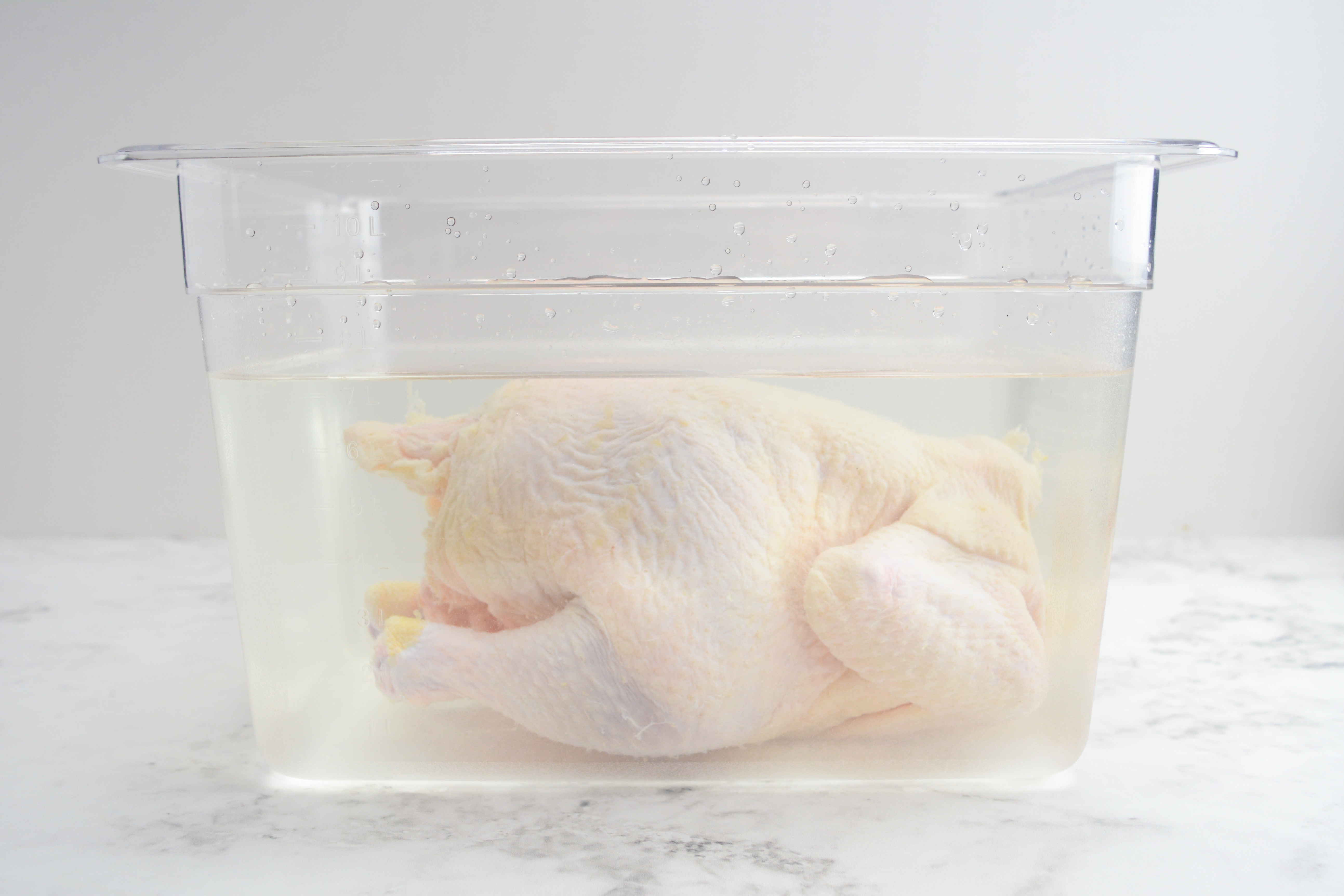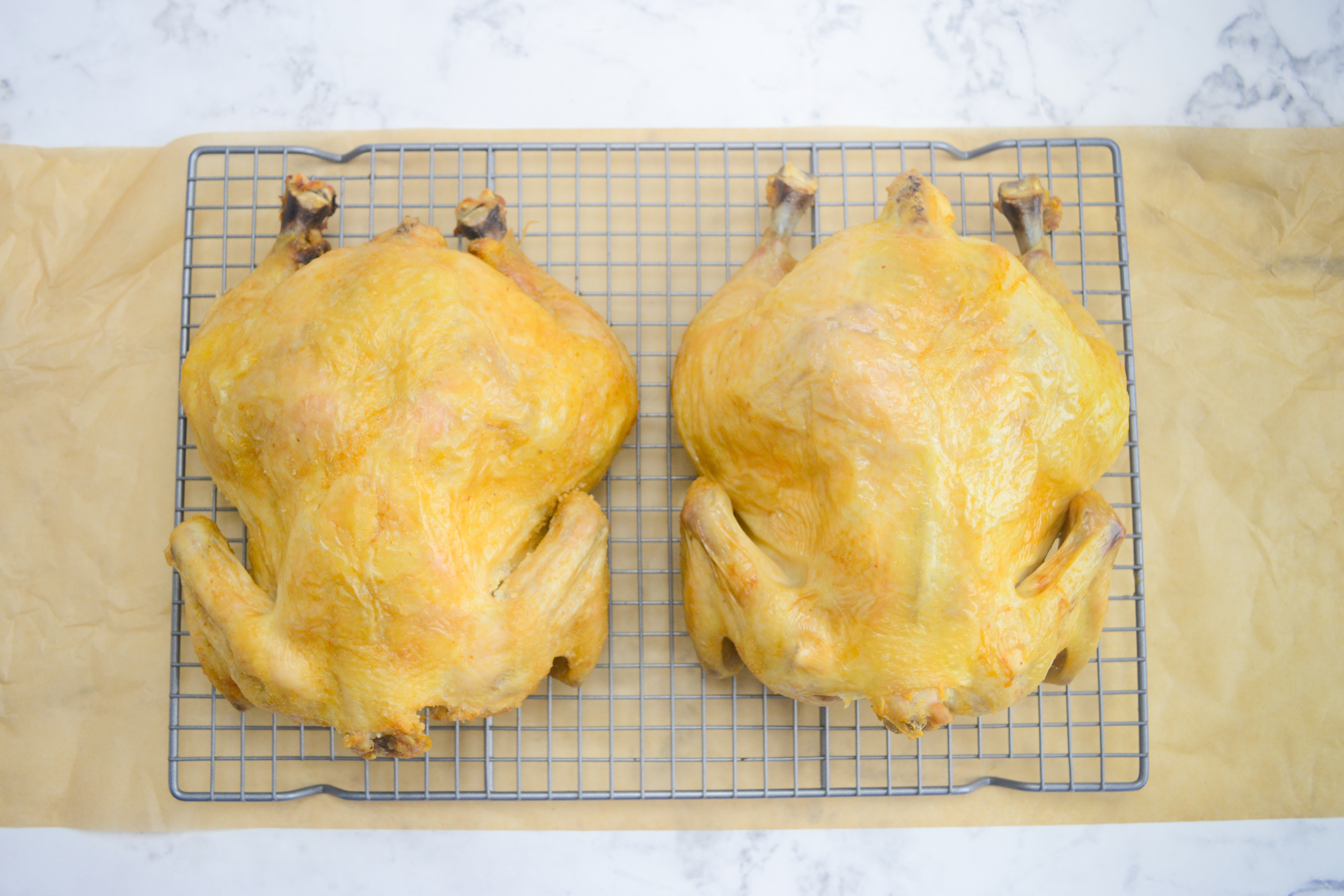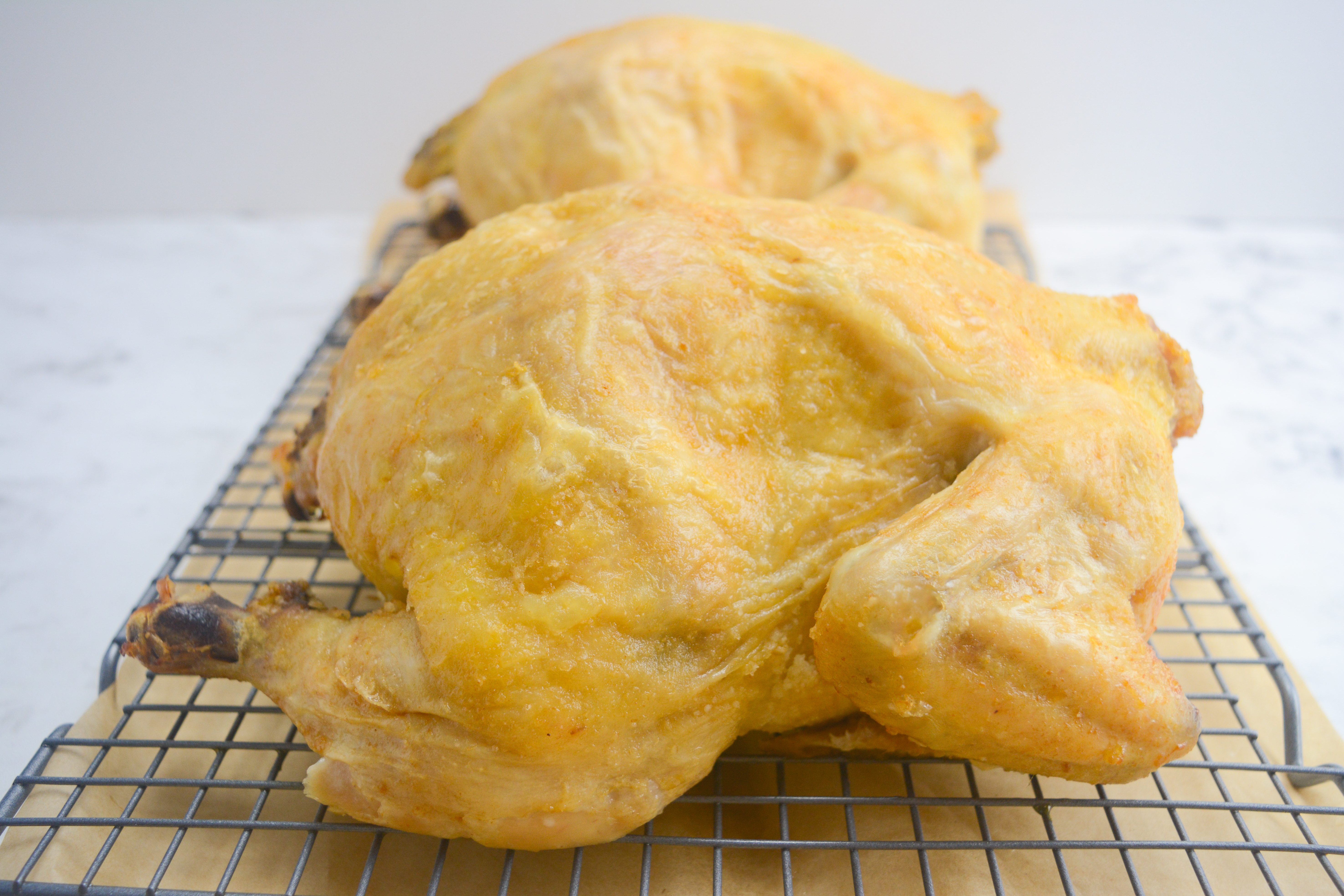Both dry brining and wet brining have the same end goal–juicy chicken with high-impact flavor. And at the root of it all, they’re not terribly different. Both methods rely on salt to season the chicken while also breaking down the proteins to make the meat more palatable. But which technique is better for your whole roasted chicken? We headed to the kitchen to put each to the test.
While both methods have merit, the dry brine technique trumped the wet brine in ease, appearance, texture, and, most importantly, flavor. Let’s dive into the specifics.
What is Brining?
Brining is a food prep technique that elevates your meat from good to unforgettable. At its core, brining is the process of using salt (and sometimes sugar, oil, and other seasonings) to infuse your protein with tenderness and flavor. Chicken can safely rest in its brining solution for anywhere from a few hours to two days, but generally, for a liquid based brine, you'll want to stick to about one hour of resting in the fridge per pound of meat you're preparing. Whether it's a Thanksgiving turkey, or grilled chicken breasts at your summer BBQ, the brining process ensures an end result that’s both rich in taste and satisfyingly succulent.
You'll find two paths to achieve this mouthwatering goodness: dry brining and wet brining. But dry brining is the clear path for those looking for the easiest way to get the most out of their meat.
What is a Dry Brine?
Dry brining, also known as salting, is a simple technique that involves rubbing your chicken with salt and letting it rest in the refrigerator overnight. While it chills, the salt acts as a drying agent, making way for irresistibly crisp skin after cooking. Letting the chicken brine overnight also allows the salt to permeate every layer of the meat, ensuring defined flavor with every bite.
How to Dry Brine Chicken

What to Do:
Generously salt your chicken (about 1 teaspoon per pound) and leave it uncovered in the fridge overnight. The longer it sits, the more flavorful it becomes, but don’t let the chill time exceed 24 hours.
How it Works:
The salt first draws moisture out of the chicken, then the salt dissolves, allowing the chicken to reabsorb it. This tenderizes and flavors the meat, all without the use of water
What is a Wet Brine?
Wet brining is the classic approach that many cooks learn first. It involves soaking the chicken in a saltwater solution to get it ready for cooking. As a result, the liquid enriches the meat with the desired saltiness and moisture to ensure a flavorful outcome.
How to Wet Brine Chicken

What to Do:
Mix the water and salt in a large container (two quarts of water and half a cup of kosher salt for a four pound bird). Then, submerge the chicken in the container, allowing it to soak for about one hour per pound of chicken.
How it Works:
While soaking, the chicken absorbs the saltwater mixture, which infuses it with flavor and helps break down the toughness of the meat. This leads to better moisture retention and evenly seasoned chicken.
What Type of Salt to Use
Coarse kosher salt is key to your brining success. The large granules will dissolve quickly for your wet brines, and they’ll also easily stick to your chicken when dry brining. Avoid using table salt, however, which can easily lead to over-salting and effectively ruining your chicken.
Dry Brine vs. Wet Brine: Which is Better?

Texture:
In a side-by-side comparison, the dry-brined roasted chicken had a slightly better browning, but what really set it apart was the crispy skin that was far superior to the wet-brined chicken.
Juiciness:
Both roasted chickens retained their moisture well, but the wet-brined chicken had more of a soft sogginess to it, while the salted chicken came out with a sturdy exterior, a juicy inside, and a much more pleasant chew.
Flavor:
While both methods infused an even seasoning throughout the bird, the wet brining method diluted the chicken’s natural flavor. This added an unappealing watery taste that the dry-brined chicken did not have.
Why Salting (Dry Brining) Wins

Dry brining chicken requires no water, less space, and one easy step, making it the perfect choice for cooks seeking the best in appearance, juiciness and flavor. Though traditional wet-brining is a classic technique with plenty of merit, dry brining offers an easier, more efficient and flavor-focused method.




